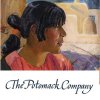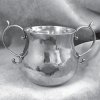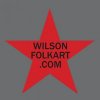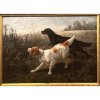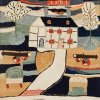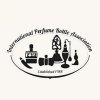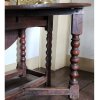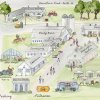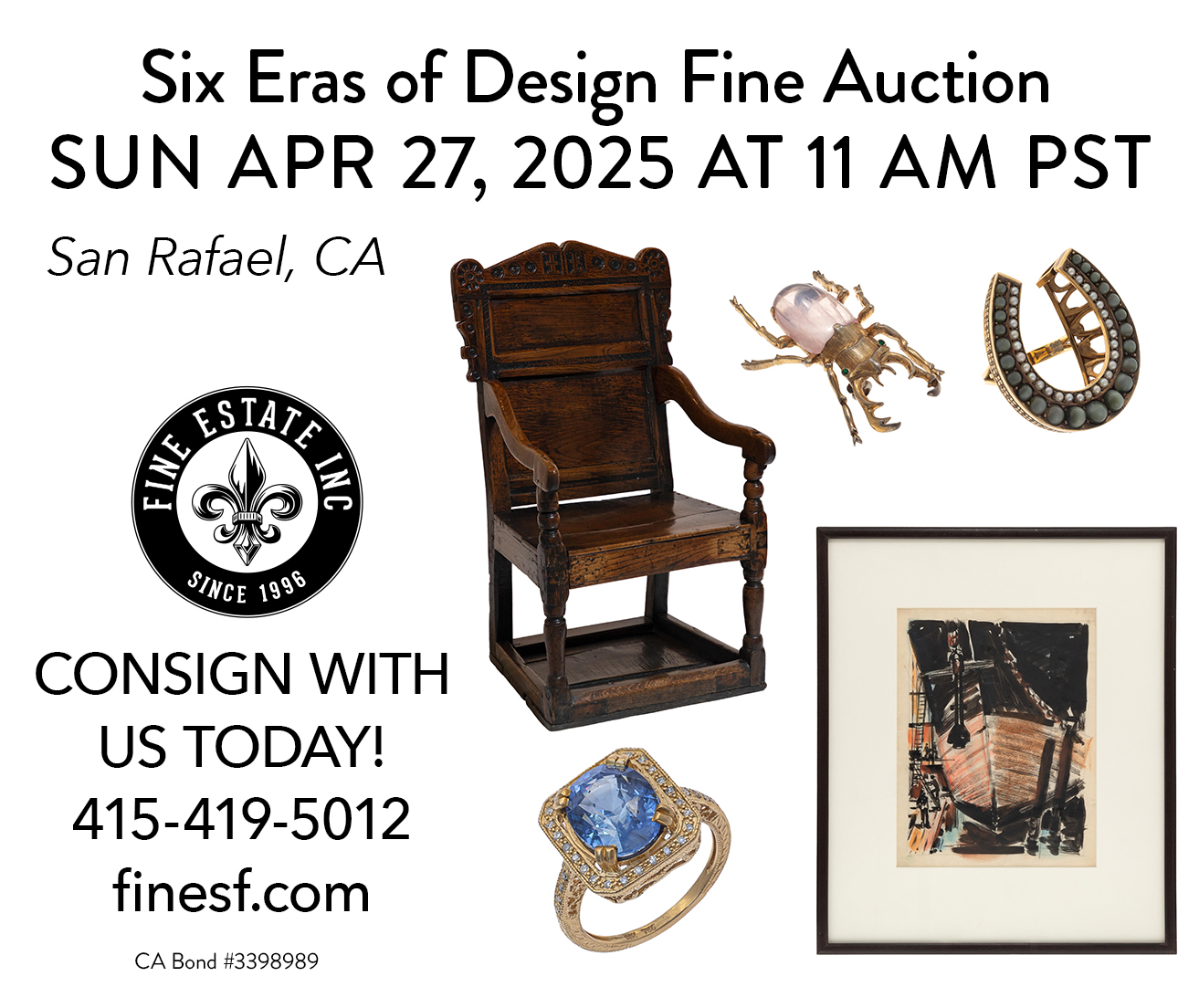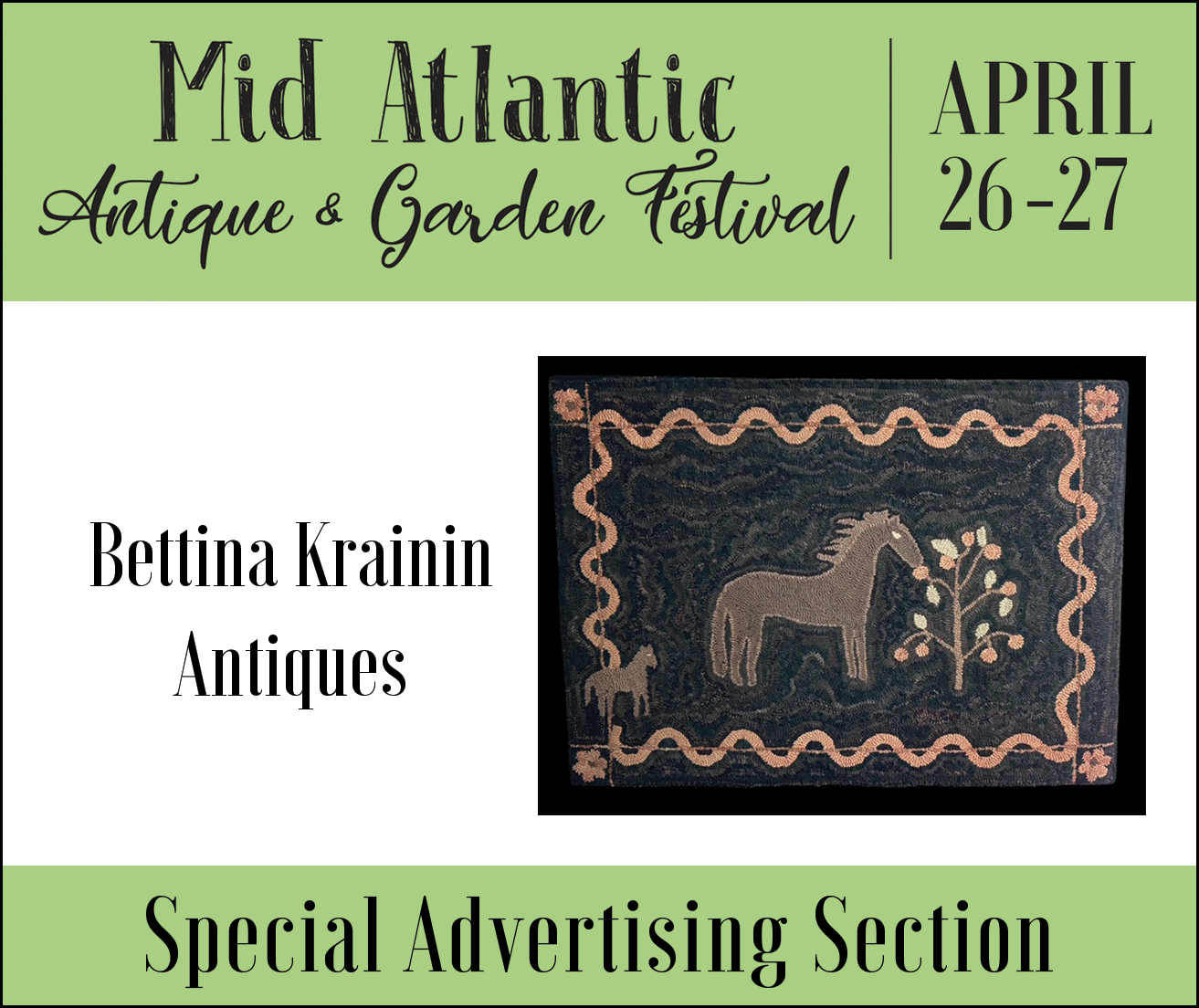Part Two of the Frent Collection Surpasses $1.3 Million Mark
February 24th, 2018
Heritage Auctions, Dallas, Texas
Photos courtesy Heritage Auctions
The second installment of Heritage Auctions’ sale of the collection of David and Janice Frent is in the books, and with it came a sale total of more than $1.3 million along with some jaw-dropping moments. There is no better way to lead off a review concerning the sale of this segment of an extensive and comprehensive collection of political Americana in Dallas on February 24 (with an Internet session taking place March 10) than by discussing George Washington.

Inscribed “George Washington: Pater Patriæ,” this George Washington inaugural button is a 25 mm copper shell with a lead-filled back and sold for $225,000 (est. $32,000/48,000). This example is the only portrait button in the genre of George Washington inaugural buttons and is thought to be the earliest item that references him as the “father of the country.”

This “eagle with glory” George Washington 32 mm gilt brass inaugural button sold for $15,000 (est. $1600/2400). This button has its original shank and most of its original gilding.
An inaugural button inscribed “General Washington Pater Patriæ” featured a half-length military bust of Washington facing one-quarter left or dexter. Heritage Auctions listed this 25 mm copper shell with a lead-filled back as “the Holy Grail of GW inaugural buttons.” That the button may be the earliest artifact referencing Washington as the “father of the country” was a bonus.
“I felt we were being very aggressive—very optimistic—putting an estimate of $32,000 to $48,000 on this button,” stated Tom Slater, director of Americana auctions for Heritage Auctions. “I never would have expected the end result.”
That end result was $225,000 (includes buyer’s premium).
“I could reference that old adage ‘this is what happens when two people really want an item,’ except there were still three bidders involved at the $100,000 mark,” Slater explained.
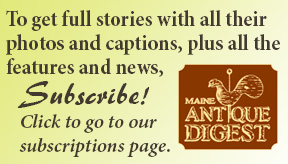 Americana collector/dealer Rex Stark of Gardner, Massachusetts, stated, “The last two bidders—neither would let go. I feel this button sold for five times what it is worth. Myself, I would have stopped at $40,000. Heritage’s estimate was fair, but obviously the last two bidders were committed to owning this button.” Stark also pointed out that he felt as though the button, though in very nice condition, appeared “to have been cleaned and polished years ago and there was a coat of lacquer on it, but that could easily be removed.”
Americana collector/dealer Rex Stark of Gardner, Massachusetts, stated, “The last two bidders—neither would let go. I feel this button sold for five times what it is worth. Myself, I would have stopped at $40,000. Heritage’s estimate was fair, but obviously the last two bidders were committed to owning this button.” Stark also pointed out that he felt as though the button, though in very nice condition, appeared “to have been cleaned and polished years ago and there was a coat of lacquer on it, but that could easily be removed.”
Still, none of that mattered in the end. Slater stated, “The button stayed in the United States,” adding, “The winning bidder is a sophisticated collector of George Washington.”

This 1920 Cox and Roosevelt jugate postcard sold for $27,500 (est. $420/480). Considered the most desirable political postcard variety, it was featured in Arthur Schlesinger Jr.’s Running for President: The Candidates and Their Images, 1900-1992, page 110.
And while all the hoopla was understandably centered on this Washington button, according to Slater other lots were equally surprising—a Cox and Roosevelt 1920 jugate postcard for one. Yes, it was arguably the most desirable political postcard variety, but its sale price of $27,500 (est. $420/480) was completely unexpected.
“The final price paid was purely the result of a Cox collector who wants anything that has to do with this political figure going against the leading political postcard collector in the field,” Slater explained.

This Breckinridge and Lane banner jugate print—a 14" x 10" hand-colored small folio lithograph—is titled “National Democratic Banner for 1860” and was published by Currier & Ives in 1860. It is one of a set of banners spanning the years 1844 to 1876. This example sold for $15,000 (est. $8000/12,000).

This Clay and Frelinghuysen banner by Kellogg has great color and is not trimmed, as is often the case with Kellogg banners. Measuring 15" x 10¾", this banner sold for $15,000 (est. $550/720).

What a great poster! Created at the height of the “golden era” of American color lithography, this William McKinley political poster is eye-catching. Featuring Americans from many walks of life hoisting a giant gold coin upon which a flag-waving McKinley is standing, with the words “Commerce” and “Civilization” backed by a rising sun, this 42" x 28" political poster promising “Prosperity at Home, Prestige Abroad” sold for $11,875 (est. $9600/14,400).
Coming to the auction block with an estimate of $550/720, an 1844 Clay and Frelinghuysen “Protection to American Industry” banner by Kellogg with extensive hand-applied color stunned when it sold for $15,000. Slater explained, “Kellogg did knockoffs of the more widely known Currier-made banners, and often the Kellogg banners are more beautiful. This would be one such example.” Currier and Kellogg were rival printmakers of that time period.
A wonderful display piece created to promote James G. Blaine also sold strongly. James G. Blaine was a U.S. representative and senator representing Maine who later served two terms as secretary of state—first appointed by U.S. President James A. Garfield, serving from March 7 until December 19, 1881, and again appointed by U.S. President Benjamin Harrison, serving from March 5, 1889, until his resignation on June 4, 1892.
Blaine had many nicknames. According to Geni (www.geni.com), “Blaine was a dominant Republican leader of the late 19th century and champion of the ‘Half-Breed’ faction of the GOP. Nicknamed ‘The Continental Liar from the State of Maine,’ ‘Slippery Jim,’ and ‘The Magnetic Man,’ he was a magnetic speaker in an era that prized oratory, and a man of charisma.”
Blaine acquired another nickname during the 1876 Republican National Convention. Blaine was nominated by Robert G. Ingersoll in a brilliant speech that made Ingersoll famous and dubbed Blaine “a plumed knight.”
The Frent collection included a die-cut plumed knight display piece made of heavy gold-leafed paper, which was heavily embossed to create an almost three-dimensional appearance. In wonderful condition and standing 10" tall, the display piece was the only example Heritage had ever handled. Estimated at $2800/3360, the plumed knight sold for $17,500.
“There was a great deal of personality to this piece, as the face of the knight was clearly Blaine’s,” Slater stated. “Again, two collectors had to have this piece, which drove the price to this level.”

This 1844 “Ship of State” silk campaign flag for Henry Clay includes a ship under full sail traversing a stormy sea. A sentiment is written below the ship: “She will founder unless with true patriot zeal / We get rid of the lubber who stands at the wheel. / We’ll take a new pilot whose heart is true blue / And such shall we find in our Harry the true.” Though a picture of such a flag held in an institution is seen on page 118 of Threads of History byHerbert Ridgeway Collins, Heritage Auctions could not recall one ever being offered for sale. This example measures 23½" x 29", is in excellent overall condition with strong colors, and sold for $32,500 (est. $32,000/48,000).
Flags did especially well. The second-highest price of the event was for a Ulysses S. Grant 1868 large (24" x 33") silk campaign flag at $62,500 (est. $16,000/24,000). With deep and strong coloration, it had terrific display presence.

This large (24" x 33") 1868 silk campaign flag for Ulysses S. Grant is a show-stopper. With strong colors and minor staining, this flag is highly desirable, as its price of $62,500 (est. $16,000/24,000) indicates. This flag was featured in Arthur Schlesinger Jr.’s Running for President: The Candidates and Their Images, 1789-1896, page 295.
Jeff Bridgman of Jeff R. Bridgman American Antiques, LLC, York County, Pennsylvania, was the high bidder on this lot and stated, “It had a terrific slogan: ‘In Union Is Peace.’ I have owned three others of that type but not with that slogan specifically.”
A Henry Clay 1844 “Ship of State” 23½" x 29" silk campaign flag sold for $32,500 (est. $32,000/48,000). The flag wore the sentiment “She will founder unless with true patriot zeal / We get rid of the lubber who stands at the wheel. / We’ll take a new pilot whose heart is true blue / And such shall we find in our Harry the true.”
“Flags continue to be a blue-chip area where political Americana is concerned,” Slater stated. “Such flags have really taken off in recent years, and I feel it is due to their graphic appeal and display-ability as well as historical importance.”

“Condition was a huge factor where this Abraham Lincoln George Clark ambrotype was concerned,” Tom Slater of Heritage Auctions stated. According to the catalog listing, in 1860 “photographic novelties had a transformative effect on American politics. The most famous example is this Lincoln portrait known as the ‘Cooper Union’ pose.” Iconic photographer Mathew Brady created this image when Lincoln was in New York to give a speech at the Cooper Union Institute in February of 1860. At the time Lincoln was just one of many who aspired to be the Republican presidential nominee. This ambrotype, which sold for $35,000 (est. $19,200/28,800), played a major role in establishing Lincoln nationally. Heritage stated, “Collectors have long considered this impressive 2 1/2" x 2 1/8" brooch to be the premier photographic item from that landmark election.” This brooch is labeled “Geo. Clark, Jr., & Co., Ambrotype Artists” and was made in two forms: one with a hole at the top for suspension, the other with a vertical pin on the reverse. This example is a pinback version and is in what Heritage described as being “unimprovable” mint condition, a rarity for items such as this.

The wording on this Abraham Lincoln Pennsylvania campaign broadside from 1864 is wonderful. The 23" x 18½" yellow paper broadside is titled “Lincoln and Johnson!” and urges “The Loyal Men of W. Brandywine and the Townships adjoining...to meet at Brandywine Manor, on Thursday Even’g, October 6th, 1864, at seven o’clock.” It continues, “All who desire Peace through Victory over Rebels in arms against their Government; all who rejoice in the successes of Grant, Sherman, Sheridan, and Farragut; and all who are opposed to a DISGRACEFUL ARMISTICE with Traitors, are invited to attend.” With an attention-grabbing central woodcut-printed eagle, this broadside sold for $16,250 (est. $16,000/24,000).
And one cannot talk about the Frent collection without discussing campaign ribbons. “Ribbons are a specialty of the Frents, and they acquired the very best,” Slater noted. A Lincoln and Johnson 1864 jugate silk campaign ribbon, considered by many to be the top ribbon in the Frent collection, did not disappoint when it sold for $21,250 (est. $12,000/18,000).
“This sale price was the second-highest price ever paid for a silk campaign ribbon,” Slater explained, “and the color of this ribbon really set it apart. The red, white, and blue colors were very good, as was the condition of this ribbon.”
When asked why these kinds of items are commanding such bold prices, Slater suggested it is due to a change in mentality where buying is concerned. “In this collecting area, people had a preconceived range that they felt items should sell for, and they would not bid beyond that range. But that mentality has fallen away. If a piece is really special, buyers are willing to step way outside their comfort zone in order to become its new owner.”

This pro-League of Nations jugate poster featuring James M. Cox and Franklin Delano Roosevelt with a “Keep Faith with Our Dead” slogan sold for $21,250 (est. $8000/12,000). It has great content, color, and graphics and is sizable at 44½" x 28". The poster includes a waving American flag, the stanzas of “The Star-Spangled Banner,” and portraits of Democratic nominees Cox and Roosevelt flanking a panel with quotes by Harding and others supporting a separate peace treaty between the United States and Germany. Other information presented includes quotes by great Americans in favor of peace and establishing a League of Nations and a panel that discusses Wilsonism, which ends, “Let Wilsonism be tried in the balance and God help America if honest men and women blindfold themselves and permit thieves and slanderers to manipulate the scales.”
Slater stated that this is, in his opinion, a fairly recent development and is especially apparent when the item in question is possibly the only one known to exist. “The thinking is, ‘If this is the only known example, and I let it get away, then my collection would be worthless because it would be incomplete.’
“When a collection like the Frents’ becomes available, buyers are ‘coming out of the woodwork,’ so to speak. We were excited to see well-known, established collectors bidding. We were excited to see dozens of new, first-time bidders participating and winning pieces. The excitement surrounding the selling of the Frent collection is making a statement, which is very exciting to witness.”
Heritage Auctions believes it will take another five auctions to fully disperse what Janice and David Frent spent a lifetime acquiring. “It is hard to imagine all of this material was in their home,” Slater explained. Eight rooms plus a basement were packed with pieces. If you think about it, yes, the Frents owned this collection, but at one point, the collection owned them. “It has to be a relief to no longer be the sole caretakers of such significant historical material,” Slater stated.
David Frent was quoted before the first auction in an October 2017 article posted online (www.intelligentcollector.com) as saying, “We feel fortunate to have had the time and resources to search and build our collection. After giving much thought, we made an extremely difficult decision. At this juncture, we want to give the opportunity to others to enjoy the items we have cherished for so long and feel this is the only way to be fair to all.”
That “fairness” will continue with the next live installment of the sale of Frent material, which will take place June 2 and 3. The Internet-only section will occur on June 16. Those who desire political Americana can’t wait. For more information, visit the Heritage website (www.HA.com).

This James G. Blaine plumed knight display piece, die cut from heavy gold-leafed paper and heavily embossed to give an almost three-dimensional appearance, sold for $17,500 (est. $2800/3360). Not only is this 10" tall piece in wonderful condition, it is so well done that Blaine is clearly recognizable as the knight in armor.

The graphic appeal of historical parade banners is a huge draw. This Horatio Seymour folk art example is a nice size at 19" x 31" and features an eagle clutching an olive branch and arrows. Hand painted and signed by the artists, “Charley & Julia Colton,” this “Seymour & Blair” banner sold for $15,000 (est. $16,000/24,000). Heritage’s catalog listing stated, “The Frents note that over the years this vibrant banner has been one of the most commented-upon items in their collection, and rightly so.” It is pictured in Arthur Schlesinger Jr.’s Running for President: The Candidates and Their Images, 1789-1896, page 298.

In an unusually large size (1¾" diameter), this “Welcome” button depicting Uncle Sam greeting Teddy Roosevelt as he appears in a golden sunrise sold for $6875 (est. $3200/4800). The back paper is labeled by maker Whitehead & Hoag Co.

The only listed campaign flag for 1896, this McKinley and Hobart jugate silk campaign flag sold for $6250 (est. $1600/2400). It measures 10½" x 15" and is pictured in Arthur Schlesinger Jr.’s Running for President: The Candidates and Their Images, 1789-1896, page 438.
Originally published in the May 2018 issue of Maine Antique Digest. © 2018 Maine Antique Digest












